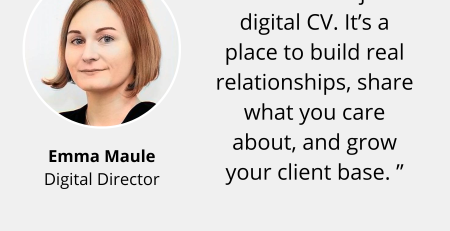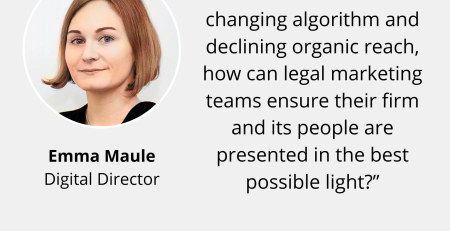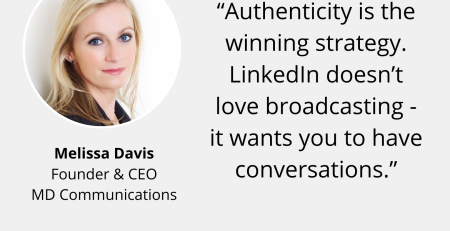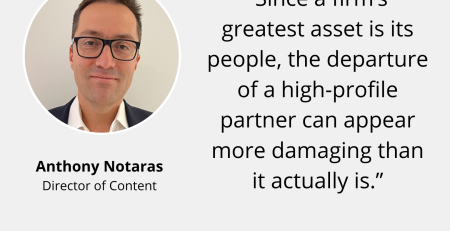Our Digital Director Emma Maule explains the value of content within your marketing activities and outlines her top tips for creating an effective content strategy.
Some law firms spend huge amounts of time and money on expensive website redesigns and setting up social media channels with little thought or resource given to the long-term content marketing plan.
While it’s easy enough to keep your digital presence ticking over, you’ll only really start to see the benefits if you put some effort into publishing regular, quality content.
Avoid a content drought
There will be times when content ideas seem to be drying up. Keeping an eye on content being published by others can give you new ideas to work with. Writing about your areas of expertise, commenting on cases, or offering some free advice are always a good backbone for your content strategy, but make sure the culture and values of the firm are being showcased front and centre. Document all charity and pro bono work, as well as internal firm events, with write-ups alongside photos and video so people can get a feel of your firm’s personality. Setting up a regular blog on your website or showcasing your expertise by writing articles on LinkedIn are great ways to build your personal brand and your firm’s reputation.
Another key way to avoid the dreaded content drought is by developing a content calendar. Noting dates of key events or deadlines gives you something to work towards and helps you to develop timely content. Online tools such as TweetDeck and Hootsuite allow you to schedule your posts to coincide with events – but note that LinkedIn doesn’t perform well with any third-party scheduler so these should be avoided for this platform.
More than words
Don’t forget content doesn’t just mean text. It can mean images, videos, and social media, all of which are extremely effective ways to get messages across. Do an audit of your current content and see what can be repurposed.
Quality, not quantity
A word of caution. Don’t fall into the trap of thinking that too much content is better than too little. Regular yes, but you don’t need mountains of content to achieve your objectives. We all follow that person on social media that feels the need to share everything they’ve read. Find the balance between posting frequently but not losing sight of content strategy and quality.
Think social, be social
Social media channels such as Twitter and LinkedIn give you a platform to shout about your content and also bring visitors back to your website. But it’s not all about showcasing your own talents. Engaging with other firms’ content, as well as referrers and journalists, will raise your online profile and improve your chances of being noticed.
A short comment or share is not a hard task, and could lead to positive responses to your work. On LinkedIn we suggest commenting and liking rather than just sharing, as above all the platform is looking for engaging discussions and will reward you for writing comments under posts by showing this to all your connections, while a share will only get around 100 views. Make sure your comments add value by including an opinion, an additional angle to the post, a question, or tagging someone to suggest they read it. This should be done carefully though – no trolling and don’t comment on every single thing – but the results will be that more people see your activity on the platform.
Check what’s working
So you’ve got your content calendar and regular content is going out – but don’t pat yourself on the back just yet…! First question to ask yourself: is anyone reading it? Metrics are essential – you need to check what content is succeeding and what needs to be improved. If your target audience isn’t engaged, you’ll need to change your content strategy.
There’s no doubt that a professionally designed and modern website will always be money well spent and social media can have a positive impact on your business. But make sure you spend a good portion of that resource on your long-term content strategy.
For more advice on how to develop a content strategy get in touch.
Download our social media guides here.












